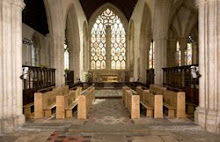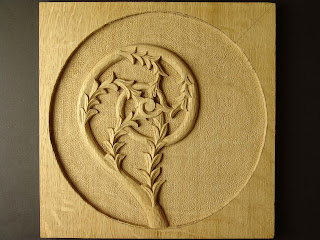I was recently asked to write a review for British Woodworking
Richard
Fyson, Cabinet Maker
The history
of British furniture makers in the early 20th century is generally
well documented centring on such Arts and Crafts luminaries such as Gimson and
Sydney and Edward Barnsley. The link between these inspirational figures and
contemporary designer makers was Edward Barnsley (1900 – 1987) who set up his
workshop in 1921, which continues to this day producing commissions and providing
training for future craftspeople. Barnsley managed to survive the economic
cycles and changing fashions, but it wasn’t until the Craft Revival of the late
60s and early 70s that contemporary furniture designer–makers begun to flourish
as economic policies encouraged greater prosperity.
Alan
Peters, alumnus of Barnsley’s apprenticeship programme, set up his own workshop at the very
beginning of the Revival, becoming the role model for many of us who were
making our way in the early and mid 1970s. But what was happening in the 50s
and 60s following World War II when traditional craft skills and workshops were
being swept away in the name of modernity and technology?
When Nick
Gibbs asked me consider reviewing this book I was curious but sceptical that it
might be vanity publishing. What I discovered was a document that has its place
in the history of British furniture makers. It gives a rare insight into the
life and work of what would otherwise be regarded as an “anonymous” but
dedicated craftsman who, as well as a handful of Arts and Crafts-inspired
individuals, kept the candle burning throughout those opaque post-war years;
the book shines a fascinating light on this period.
Richard
Fyson (1917-2008) was a self–taught, gentleman cabinetmaker, a distinguished
naval officer who at the age of 32, accompanied by his wife and three children,
turned his back on a comfortable career to follow his passion, working in
wood. The only obvious advantages he brought to his new vocation were his
self discipline and people-management skills. His extraordinary capacity for
hard work combined with long hours enabled him to run a very busy workshop and
market garden business, based at Kencot, Oxfordshire, just a few miles from
Kelmscott, William Morris’s home.
Written as
a short biography, divided into decades, followed by an extensive thematic
catalogue of a lifetime of commissions the book provides a valuable insight
into a career spanning over forty years. There are an impressive number of
church commissions in Oxfordshire and further afield, which probably can still be
seen today. His public commissions also extended to Oxford University projects including a commission
from the famous Bodleian Library for forty chairs (at a cost of £18.00 per
chair). Oxford University College commissions included Lincoln and
Keble. A commission from Nuffield College, for which he competed with Edward
Barnsley, seemed to have resulted in collaboration between them. It appears
that Fyson’s design was rejected but instead he made a series of tables and
benches to Barnsley’s design. He also produced a
significant number of domestic pieces for private clients; the overall
impression is a high level of craftsmanship combined with a diverse approach to
design.
The book
gives us glimpses into the crafts people community of the 1950s. This is
reinforced by Fyson and Barnsley’s friendship. We also learn of the formation of a furniture makers’
association in 1955 following a conference attended by twenty-five furniture
makers; Fyson became its treasurer. The idea of community also extended to his
long-term commitment to training the next generation; a total of 27 trainees
over a 34-year period. Matthew Burt, one of our leading contemporary
designer-makers was amongst them. Matthew’s tribute in the book gives us a
measure of his mentor, “He gave me someone to compete with, in the best sense of
that word … His standard of craftsmanship … was steadfast, exemplary, aspirational
and a perfect role model …”.
The book is
an affectionate celebration of a generous, honourable and passionate gentleman-craftsman
and a worthy reminder that a spiritually rich and meaningful life can be
derived from following one’s heart in service to one’s community. His family
has meticulously produced it. Felicity French, his youthful granddaughter, is
credited with compiling it; the addition of new, colour photographs has given
the work a refreshing updated quality. The book can be enjoyed as an
inspirational insight into an exemplary craftsman’s life; it is also another
valuable piece of cultural history thanks to the unstinting efforts of the
Fyson family.


















































